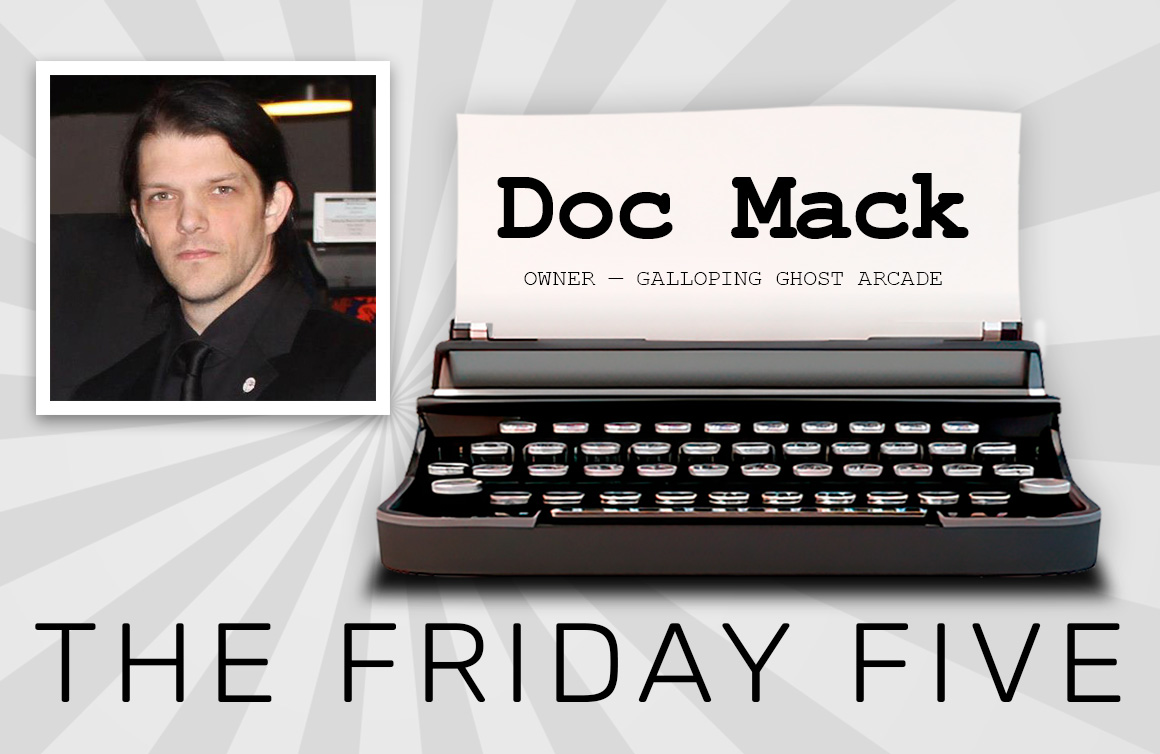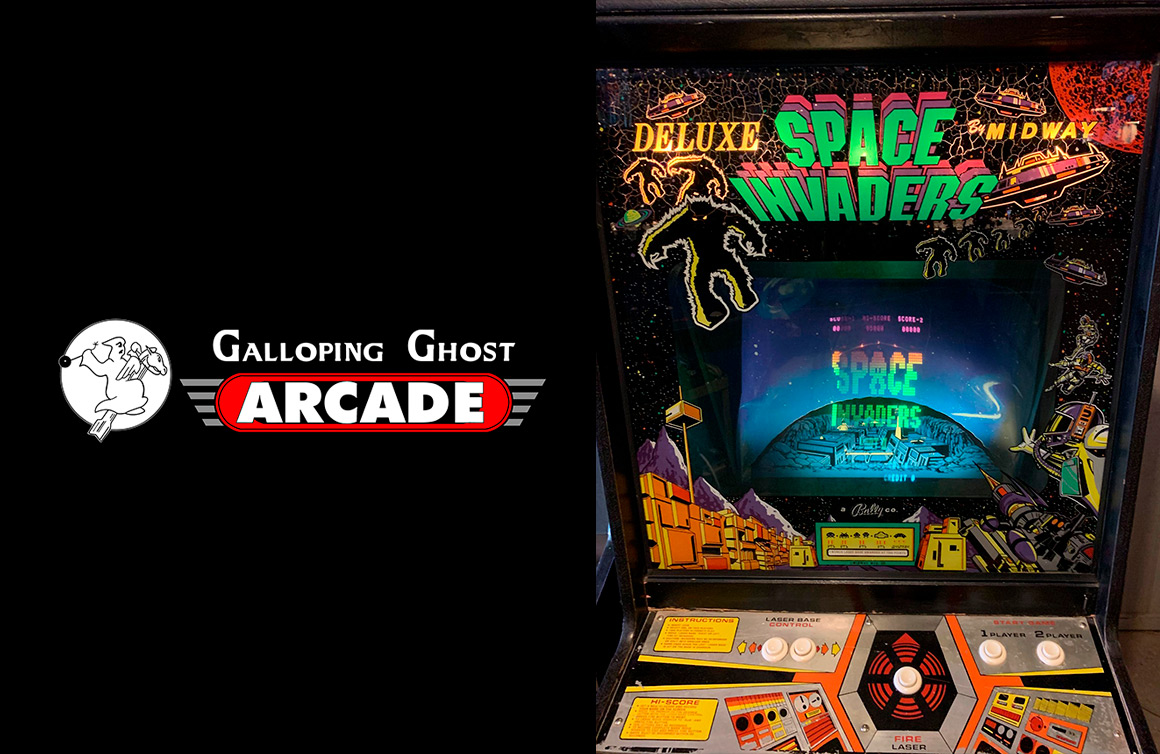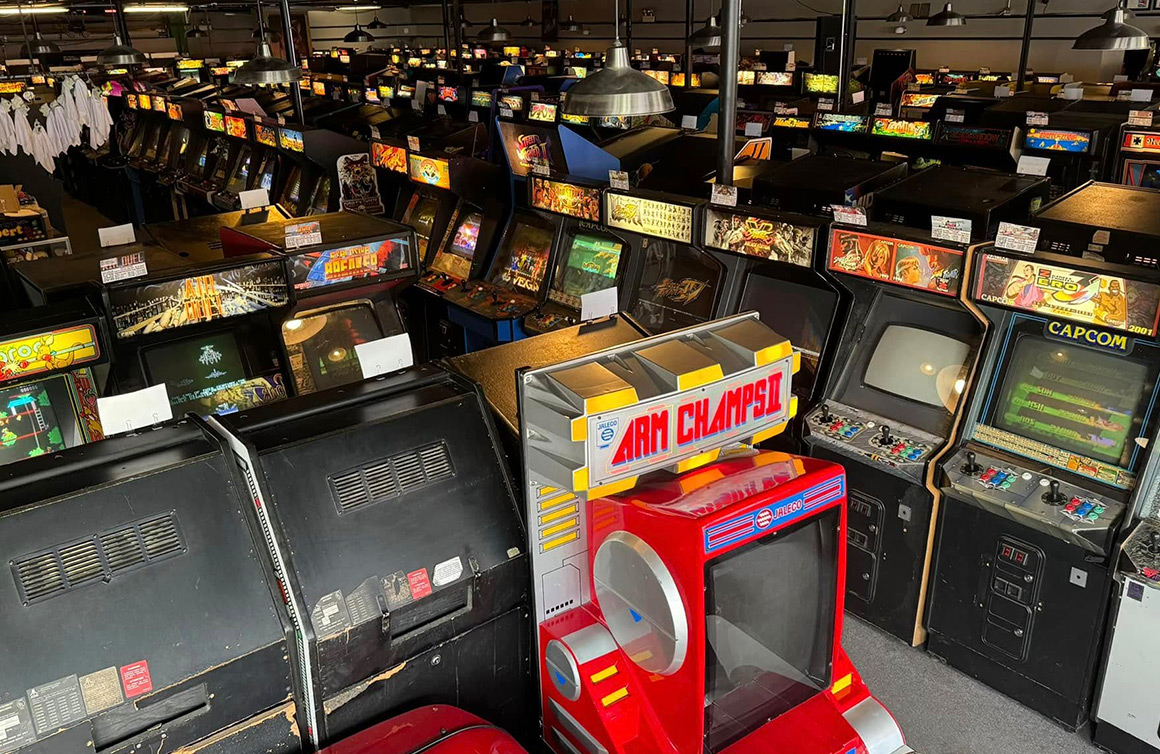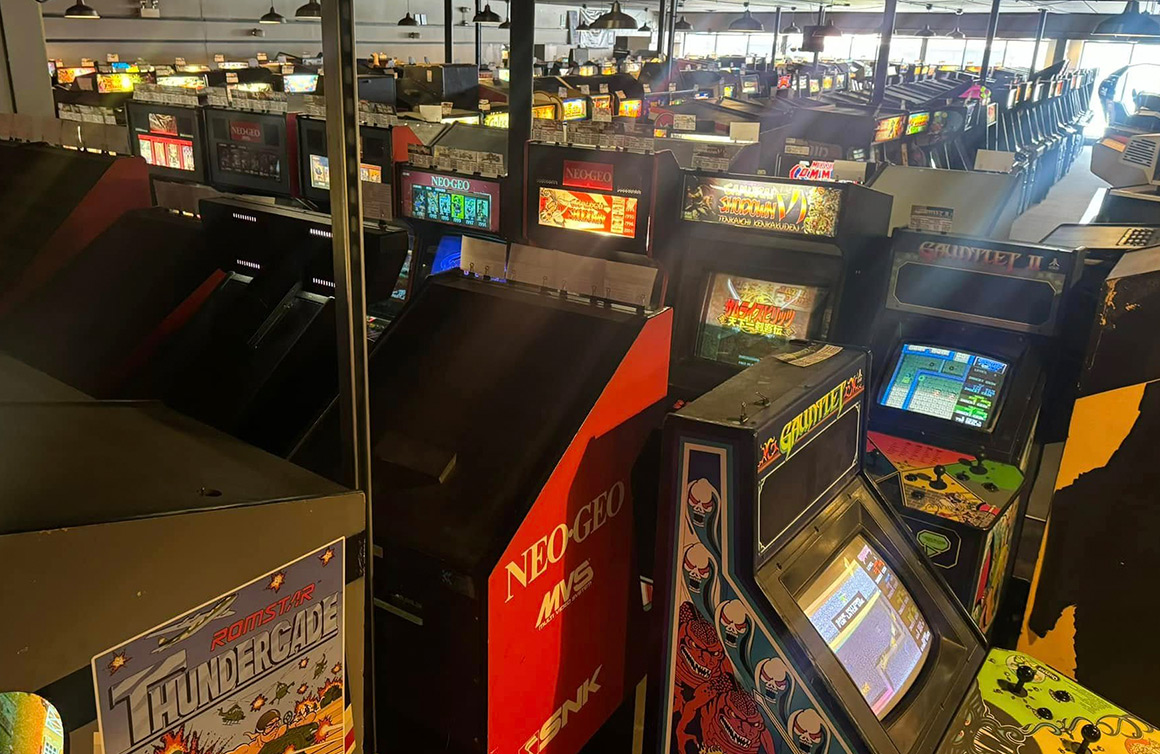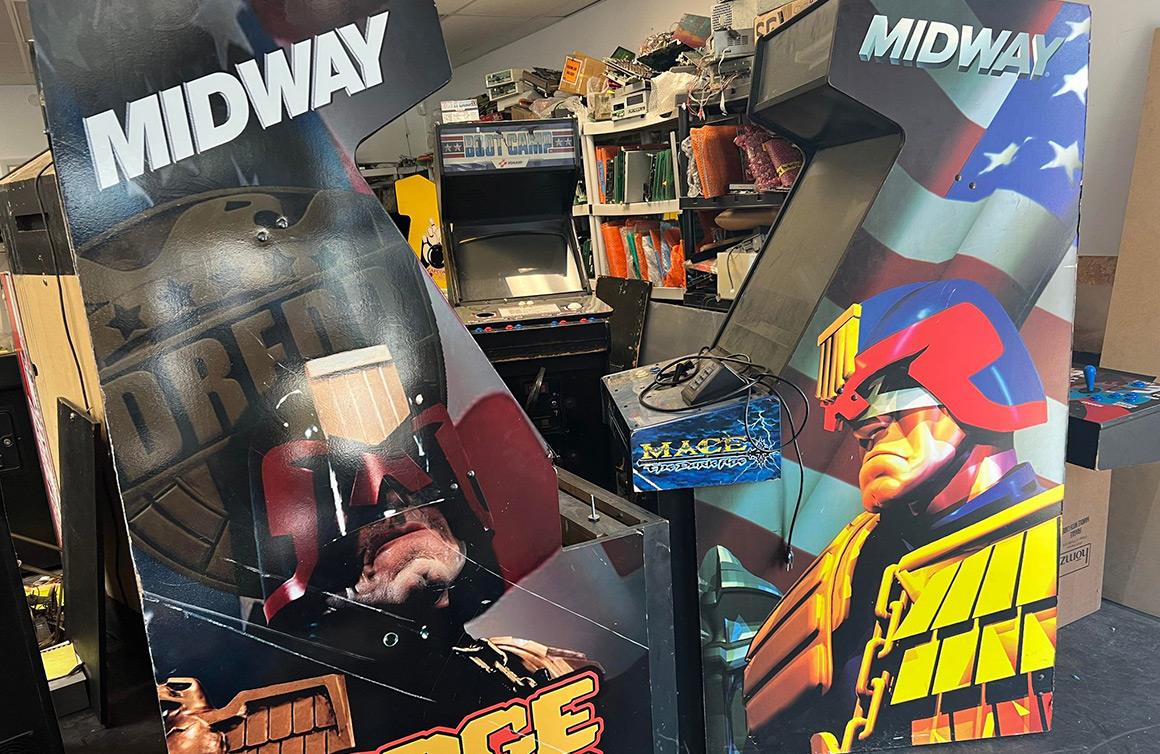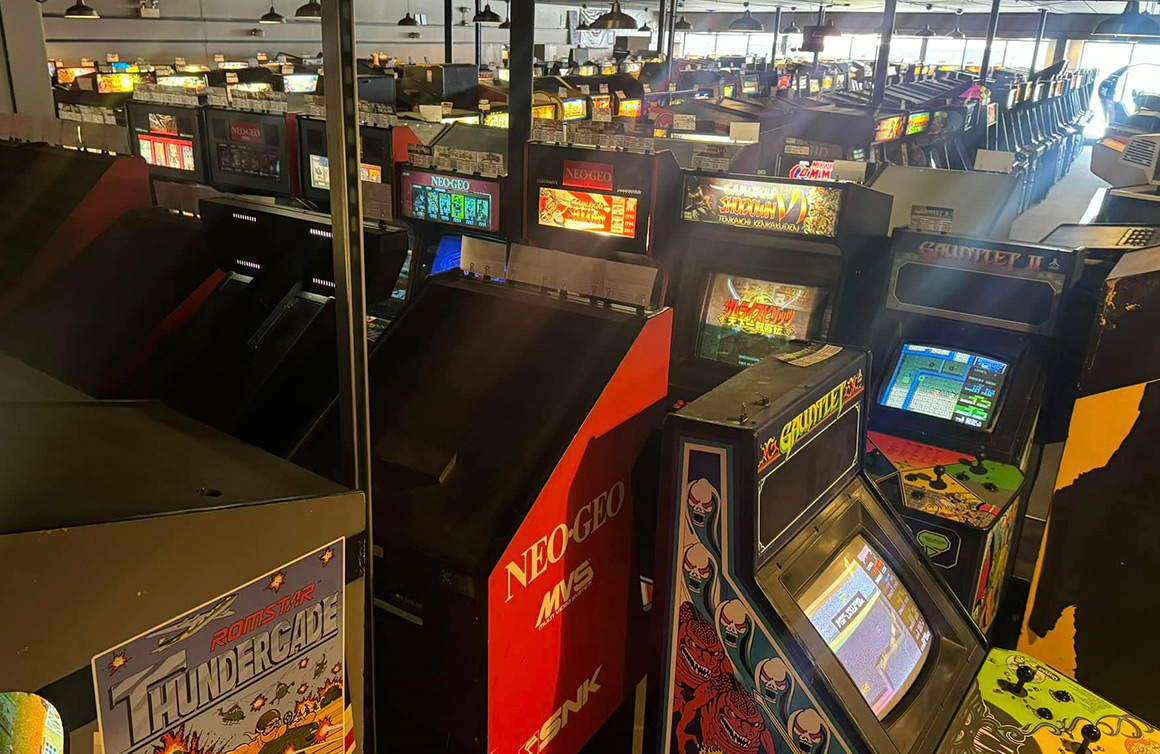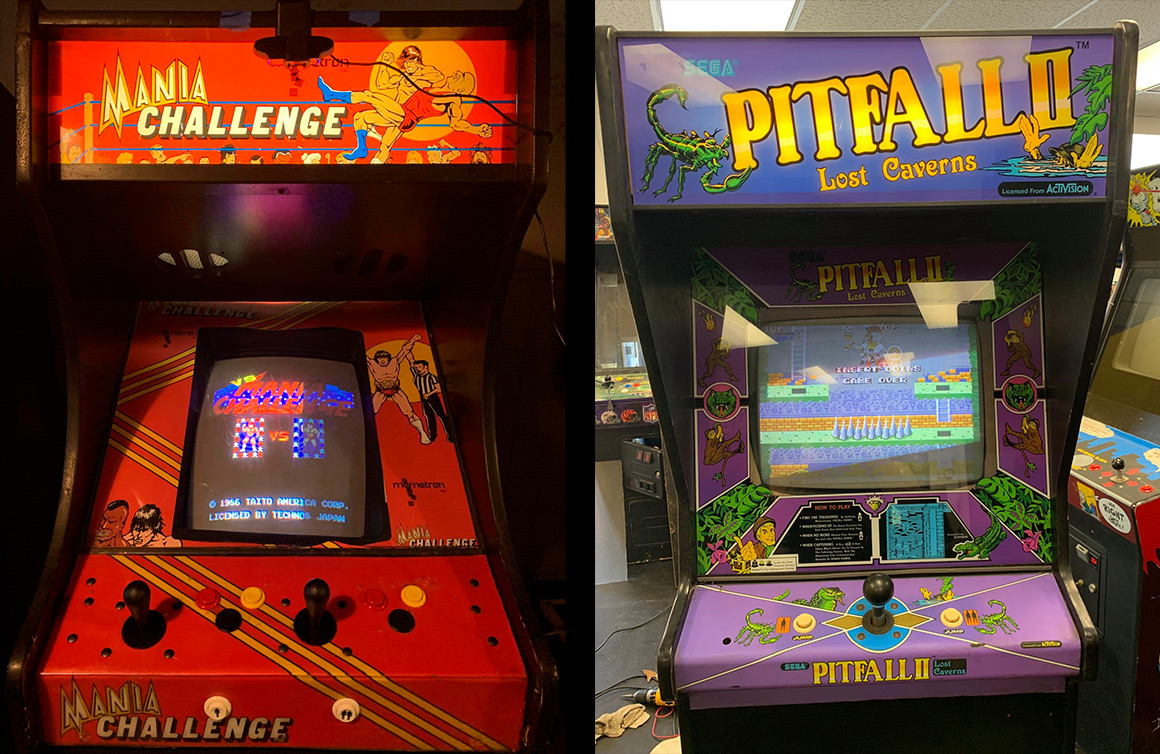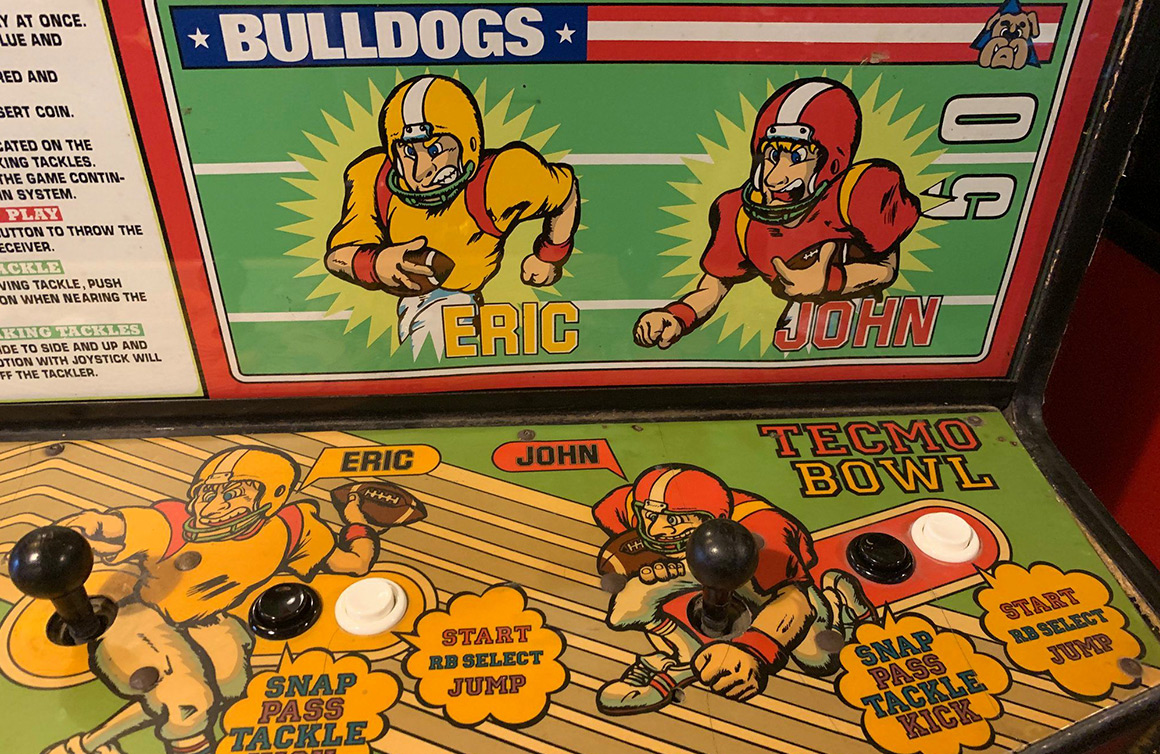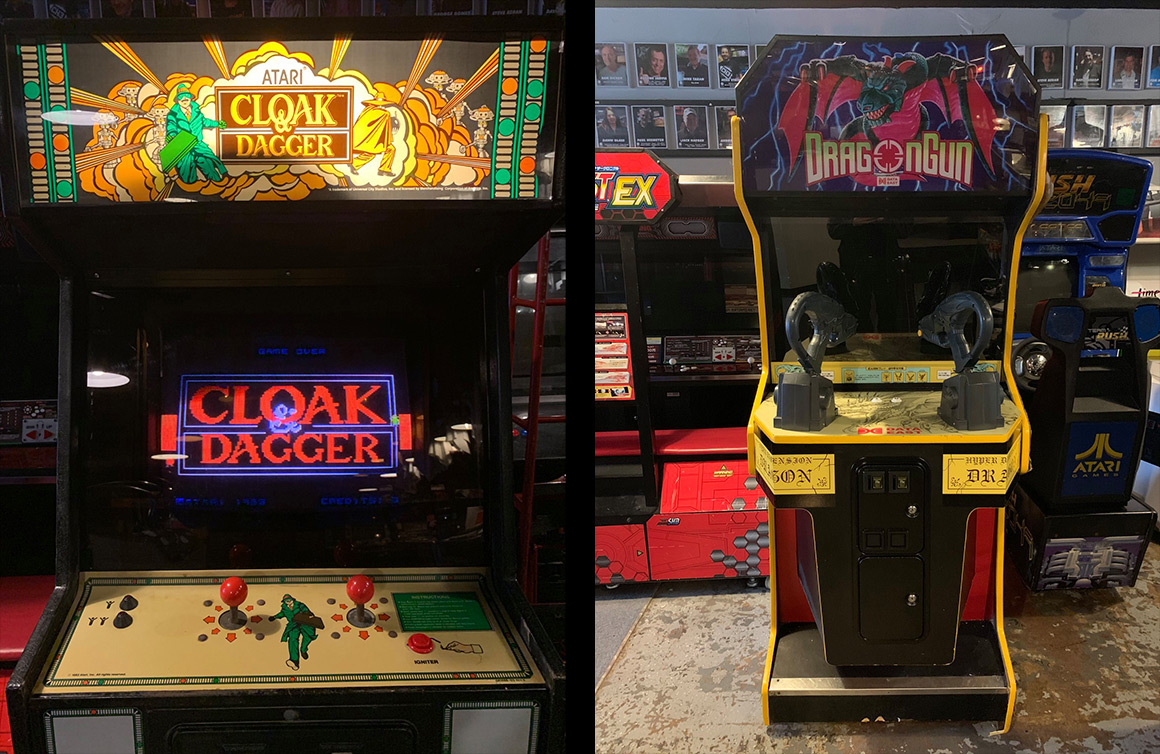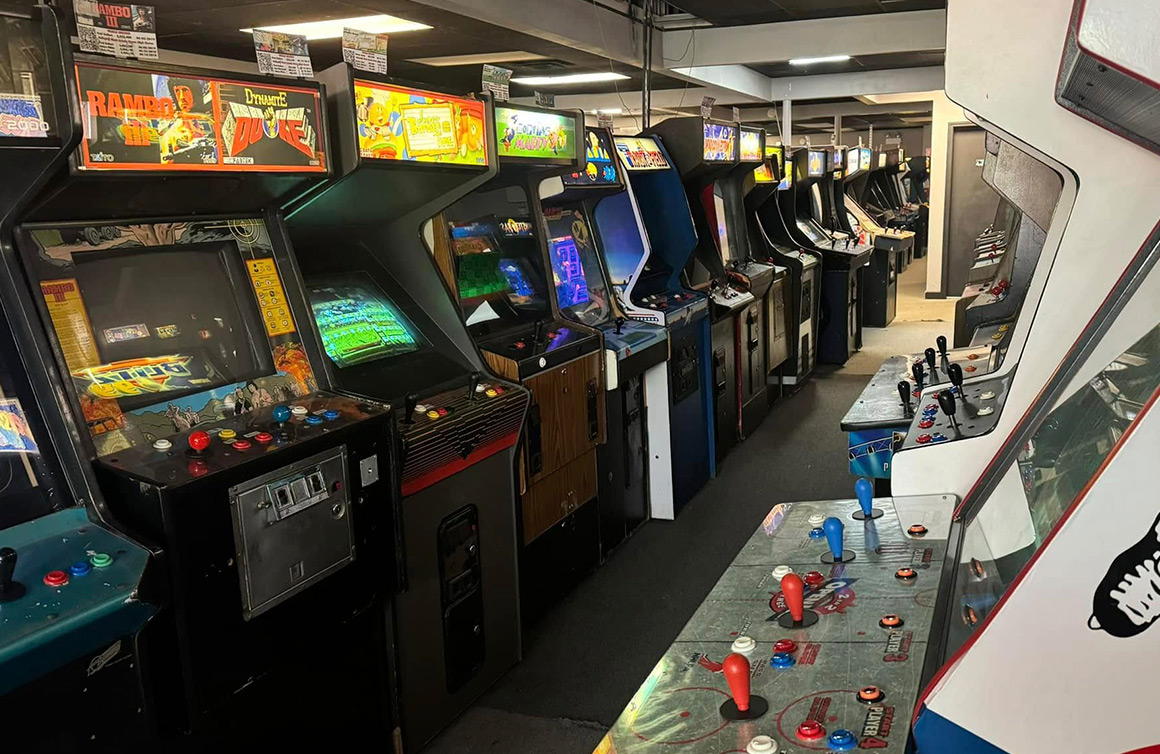What inspired you to open Galloping Ghost Arcade in 2010?
First, we opened Galloping Ghost Productions in 1994 with the intent of making arcade games, starting with a game called Dark Presence that we spent 10 years working on. We shot it with live actors — very much in the Mortal Kombat vein. The project was absolutely huge.
In 2005 we went back to our filming studio and re-shot the entire game and its sequel. We started going into post-production, and it got to the point of, well, we’re making an arcade game, but what’s the arcade scene even doing at this point? At that time, a website called Aurcade started up, which was a location tracker for arcades. It was great timing. We could go out and check a bunch of arcades and build a list of venues to sell our game to. That’s how we discovered that a lot of the mom-and-pop shop arcades were empty.
I lived in arcades until about 2000, and they were always packed. Seeing them empty was a surprise. I would take my guys out to play various games and get them a little more into the arcade scene and we were having a hard time finding a place with working games. Why would anybody come to an arcade when none of the games are working, right?
Around 2007 I started jotting down a list of all these things that were not working well at arcades, and it kind of spawned into the business model of what the Galloping Ghost Arcade would become. You have to make sure all the games are working. The most exciting arcades I was visiting were ones that had obscure games that not a lot of other places had. In 2010, one of my actors was selling his business. He asked me: if I could open any business, what would it be? I said I would probably open an arcade to show that it can be done with a viable business model. He said, let’s do it.
We got a lot of pushback from the various towns we approached. No town wanted an arcade. They didn’t want any nefarious activity that they thought an arcade would bring. I knew arcades were nothing like that, but it was a perceived notion. Everybody we talked to at the time thought this thing would fail. There wasn’t such a thing as a free-play arcade at the time and they didn’t think there would be interest in playing these old games for a $15 entry.
It ended up happening very quickly — this off-the-cuff business model just came together. My business partner at the time wasn’t really into video gaming and I would later buy him out completely — we just had different ideas of what to do with the business.
Because I had a video-game production company, I wanted to know the stories of who made all the games. I wanted that extra step to it. My arcade visits back in the day were always very solitary — you didn’t know anybody at the venue — so I wanted to make it more of an experience for visitors and a place where you would get more background on the games, and there were people to talk to who knew about this stuff. These are things that hadn’t been tried before. And, literally everybody from well-known techs to game designers was telling us we weren’t going to last six months in business.
On opening night, we had a line two blocks long and it never stopped. We were profitable after eight months, and it’s just kept growing.
Nobody wanted to buy arcade games at that time, so games were dirt-cheap. We bought our first 114 games for $5,000. They cost almost nothing, and anything you wanted you could find back then. It’s such a stark contrast. Now, we’ve helped just under 50 arcades open worldwide. We shared our business model, showed how to fix stuff, how to build a community, how to stream, how to buy and sell games. There’s no shortage of people who want arcade games now — it’s an amazing thing.

The arcade features over 1,000 games. What are some of the challenges in maintaining such a significant representation of arcade history?
The maintenance has always been the cornerstone of the arcade. Not only do we have the games, we want them playable.
When we opened, the goal was to get as many games up and running as possible. We were doing stuff with LCD screens and had a lot of conversion cabinets. We wanted to get games up and running and then make them original and authentic. At one point, we probably had 50 LCD screens. As we grew, we got to the point where now we have no LCD screens that aren’t supposed to be LCD screens.
When you have guys like Eugene Jarvis, Larry DeMar, and George Petro coming into the arcade, and guys like Josh Tsui, Brian Colin, Jeff Lee — it’s a long list of industry legends who visit the arcade. They get to see the art they made decades ago and that those games still make people happy.
The arcade does have its museum aspects. In the coming years, we plan to open a video game museum. These guys have been so generous to us. They see what we’re doing. We’re not reselling anything. Everything they give us goes into the arcade, gets displayed, and shared with people. We’ve had some crazy offers from people wanting to buy the games. We never could — Primal Rage 2, for example. We built up a fighting game community. A guy who went by the name Tom Brady in the Mortal Kombat scene sold us a Primal Rage 2 board for next to nothing because he wanted it to be where people could play it. This is a community guy giving back to us in the community. He really loved the place. The day after we put it out, I talked with Chris Tang, one of the creators of the game, who hadn’t seen the game in 25 years. The game was so ahead of its time that people didn’t like it when it was out on test. He felt like it was a blemish on his career. But, we’ve shown how great the game really was and that meant so much to him. The day after that, somebody called and offered us $60,000 for the board. We paid less than $500 for it and were in the middle of trying to do an expansion of the arcade. A $60,000 cash infusion would have been great. But, that kind of defeats our purpose of showing the games, so we turned down the offer.
We really love these games. We love telling their stories. It’s important to have them all in a collection and show the history of arcade gaming. 
Are there games you would like to add to the inventory?
There are a few.
George Petro, owner of Play Mechanix, has an amazing resume of games, including Narc and Revolution X — he comes to the arcade. He was that we have an outrageously rare game in a wooden cabinet called Blaster — Eugene Jarvis and Larry DeMar worked on the game. George thought it was amazing that we found one because only a handful were ever made. But, he commented that we didn’t have Splat! I didn’t even know what that was.
I started doing research and George gave me a few pieces of artwork to help us along the way in case we were ever able to build one. We ended up doing it — we had a Splat! cabinet. George came back in and said that it was amazing but that we didn’t have Inferno — a rare Williams game. He really challenged us to keep finding these rare games. After we built Inferno, he said, “Oh, you don’t have Predators”. That one, we are kind of stuck on.
We’ve added prototypes and one-of-ones. For our 10-year anniversary, we added the Sega R360, which was always a holy grail.
So, there have been a few games that we’ve searched for and don’t have. In a sense, I’m pretty happy that we haven’t been able to find them all because that keeps me going — the hunt for that next rare game. I like having the challenge because it’s amazing to find them. We still have a few to track down.

How has the gaming community changed since the arcade first opened?
It’s done nothing but grow. I have several vantage points — I’m a player, operator, and designer — so I don’t see just one perspective. It’s very clear that the demand is there. There are so many new arcades opening. We just helped open an arcade three weeks ago. Everybody wants there to be more arcades. The finite number of games out there is problematic, and the cost of games has skyrocketed. The collector scene is big now.
It’s an incredible thing we’re seeing. When we opened, nobody thought it could be done. And now there are so many people trying it, which is great to see.
Towns are still very skeptical of it. We’ve talked at four city council meetings in an effort to change the perception. The first one we went to was out in Azusa, California, where a guy wanted to open an arcade called Super Arcade. Azusa did not think it was a good idea. We flew out to showcase what the Galloping Ghost had done for Brookfield. People have preconceived notions that there will be the problem of kids ditching school, gangs, and drugs. It couldn’t be further from the truth. But, when we opened, there wasn’t data to show that. Now, we’ve been approached by towns who want us to move there. It’s a stark contrast. The town actually has me on the Brookfield Economic Development Committee. I’m a commissioner on the council and work very closely with the town. So, I’m able to go to another town as a commissioner and let them know that arcades aren’t a bad business and can grow the community.
Players travel in from all over the US and the world — UK, Germany, Ireland, Japan, Brazil. These players stay at hotels, buy local, eat at restaurants. It’s so much bigger than just coming to the arcade. People plan their vacations around it, we’re proof of that. We now see 80,000 people per year come through the door. We’ve not had one instance in 14 years of the police having to be called for more than a car getting dinged in the parking lot — no infractions, no drug use, no gangs, no violence. We’re a proof of concept.
We’ve seen so many friendships formed, too. We’ve hosted weddings at the arcade. There have been so many incredibly positive things happen at the arcade. We used to hold a convention called Kombat Kon — we had 500 people show up for it from all over the world. You’ve never seen so many people come together like a family around a violent video game. Back in the 1990s, video games were supposed to be ripping the world apart they were thought to be such a bad thing. But we all turned out fine. Not only that, we all have something to gather around, and it brings together so many people of different backgrounds.
The negatives just aren’t true.

What does 2025 hold for the arcade?
We definitely have a lot planned. We’re shooting for adding a second and third floor to the arcade, and hoping to open a museum.
We have 1,019 games right now and are currently the largest arcade in the world. Guinness recognizes Funspot in New Hampshire as the largest — they have 611 games. We’ve far surpassed that in 2018, so we’ll have a push to get Guinness verification, which will be a pretty big deal for us. At that time, Funspot owner Bob Lawton was 95 years old and he was so proud to hold that title — we wanted him to go out on top — we were in no rush to take that title from him. It was never our intent when we opened to become the largest arcade in the world. He passed away a couple of years ago and it seems like the right time to go after that title with Guinness.
We will continue our Monday Mystery livestreams. We just passed our nine-year milestone of adding a new game every Monday. We haven’t missed one Monday yet. We want to keep doing that, but space is becoming an issue, which will be the determining factor. It’s getting harder and harder to put games in place. When we did our last expansion it was filled up almost instantly. Space is always a problem for us.
It’s very humbling. It’s an honour to hang out with the people who made all these great games. And literally, every day, I see people come in from all over the world who are so grateful to be reunited with these games. I’m having the time of my life. I can’t get here early enough, and I can’t stay late enough. I’m getting to live the ultimate dream life.

Learn more about the Galloping Ghost Arcade and explore its inventory of classic arcade games.

